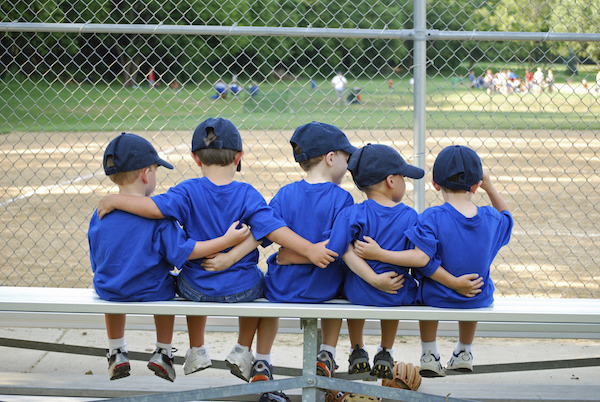
We’ve all had fun playing sports and watching our children play. We know the positives. But we can’t ignore the dark side: the pressure, the bullying, the elitism, the lack of playfulness, and the stifling of creativity. Whole Child Sports speaks directly to the many parents who feel that though today’s youth sports culture is toxic, it can be transformed into a better learning and living environment for our children. We are all in this together, and to change how our children experience sports, we must work together.
There are dozens of books that decry the toxic atmosphere of youth sports today and offer good general advice to parents. But most of them take a performance-oriented view. While sports psychologists and coaching experts rightly suggest that parents step back and concentrate more on fun, the underlying dynamic always seems to cycle back to performance. They don’t zero in on the heart of the problem—that our culture is steeped in a mind-set that imprisons us and our children in incessant judgment. We are very goal oriented, and that’s fine, but our aim should not be to develop performance princes and divas, but rather to provide our children with opportunities to become more well-rounded, supple, adaptive, and creative. That is what will serve them best in the broader context of their lives, both now and in the future.
We are living in a world in which the first question we ask our children after any game they play is, “Did you win?” and we’re suggesting a somewhat radical shift that can best be summed up by “How did it go?” Because the first question—which is usually followed up by “Did you score?” or “How many points did you make?”—frames their experience too narrowly. It spotlights the short-term outcome. If they have won, they have a positive answer to give you. If they played well and were key contributors, then they’ve shown you that they are worthy of your affection and approval. But if they lost or didn’t contribute much, the conversation—and your connection with them—hits a brick wall.
Why not frame your query more openly, by asking them to share their experiences rather than report performance statistics? In doing that, you redefine both your child’s experience in sports and what you value as most important. It opens up a window through which your children can connect with you and discuss the many facets of their encounters on the field or court with teammates and opponents, as well as off it, in the locker room or on the bus.
This might seem like a minor concern, but it is really a central issue and at the heart of the Whole Child Sports approach. When the question is “Did you win?” it’s a mismatch. We are disconnecting ourselves from their deeper reality. We are closing a door. We risk showing them we just don’t get it: We really don’t understand what’s going on for them, and in them, and why they spend their time and efforts participating in the first place. Because, as we’ll point out in this book, most kids play sports for fun and friendship. It’s personal. They also want to stretch and challenge themselves. They enjoy learning and getting better. It gives them a broader sense of self; it develops their self-esteem and self-definition.
To be clear, we are not antiwinning. What we want is to redefine winning. So let’s put the scoreboard in the proper perspective, as one informative yardstick of success. That makes it part of a larger whole, just one among several measures of developmental progress.
With a combined eighty years of coaching experience between us, we are convinced that when you redefine success in this way, you connect with a kid’s deepest motivation for playing sports in the first place. There’s nothing soft, weak, or “everyone-gets-a-trophy”–ish about Whole Child Sports. By developing the Whole Child—the Whole Athlete—we help young athletes play to the edge of their potential, to reach optimal creative performance. In other words, to enter a state of Flow, or what’s more commonly known in the sports world as “the zone.” That is when they are at their best and, as an indirect benefit, are much more likely to win more often. And they will enter into this mind-set not just in games, but also in practice. As they walk out of the gym or off the field to head home, this sense of flow follows and positively affects so much else going on in their lives. ♦
From Kim John Payne, Luis Fernando Llosa, & Scott Lancaster. Beyond Winnning: Smart Parenting in a Toxic Sports Environment (Lyons Press, Connecticut, 2013)
